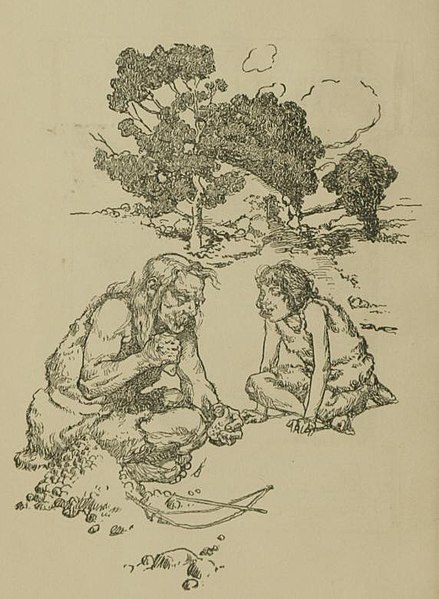The Paleolithic or Palaeolithic, also called the Old Stone Age, is a period in human prehistory that is distinguished by the original development of stone tools, and which represents almost the entire period of human prehistoric technology. It extends from the earliest known use of stone tools by hominins, c. 3.3 million years ago, to the end of the Pleistocene, c. 11,650 cal BP.
Hunting a Glyptodon. Painting by Heinrich Harder c. 1920.
Cave of Altamira and Paleolithic Cave Art of Northern Spain
A skull of early Homo neanderthalensis, Miguelón from the Lower Paleolithic dated to 430,000 BP.
Many giant mammals such as woolly mammoths, woolly rhinoceroses, and cave lions inhabited the mammoth steppe during the Pleistocene.
Prehistory, also called pre-literary history, is the period of human history between the first known use of stone tools by hominins c. 3.3 million years ago and the beginning of recorded history with the invention of writing systems. The use of symbols, marks, and images appears very early among humans, but the earliest known writing systems appeared c. 5,200 years ago. It took thousands of years for writing systems to be widely adopted, with writing spreading to almost all cultures by the 19th century. The end of prehistory therefore came at different times in different places, and the term is less often used in discussing societies where prehistory ended relatively recently.
Engraved images of animals on antler
Massive stone pillars at Göbekli Tepe, in southeast Turkey, erected for ritual use by early Neolithic people 11,000 years ago
An early sketch imagining an adult and a juvenile from prehistoric times making a stone tool
A nineteenth century concept of early humans in a wilderness








